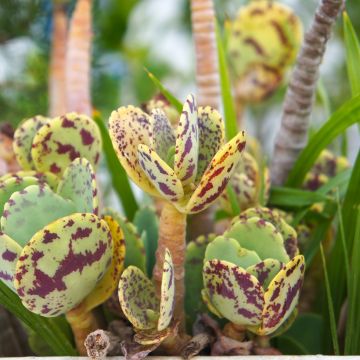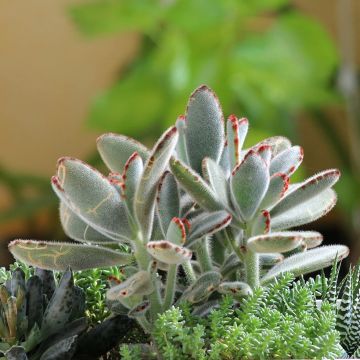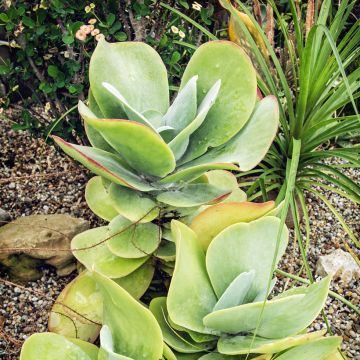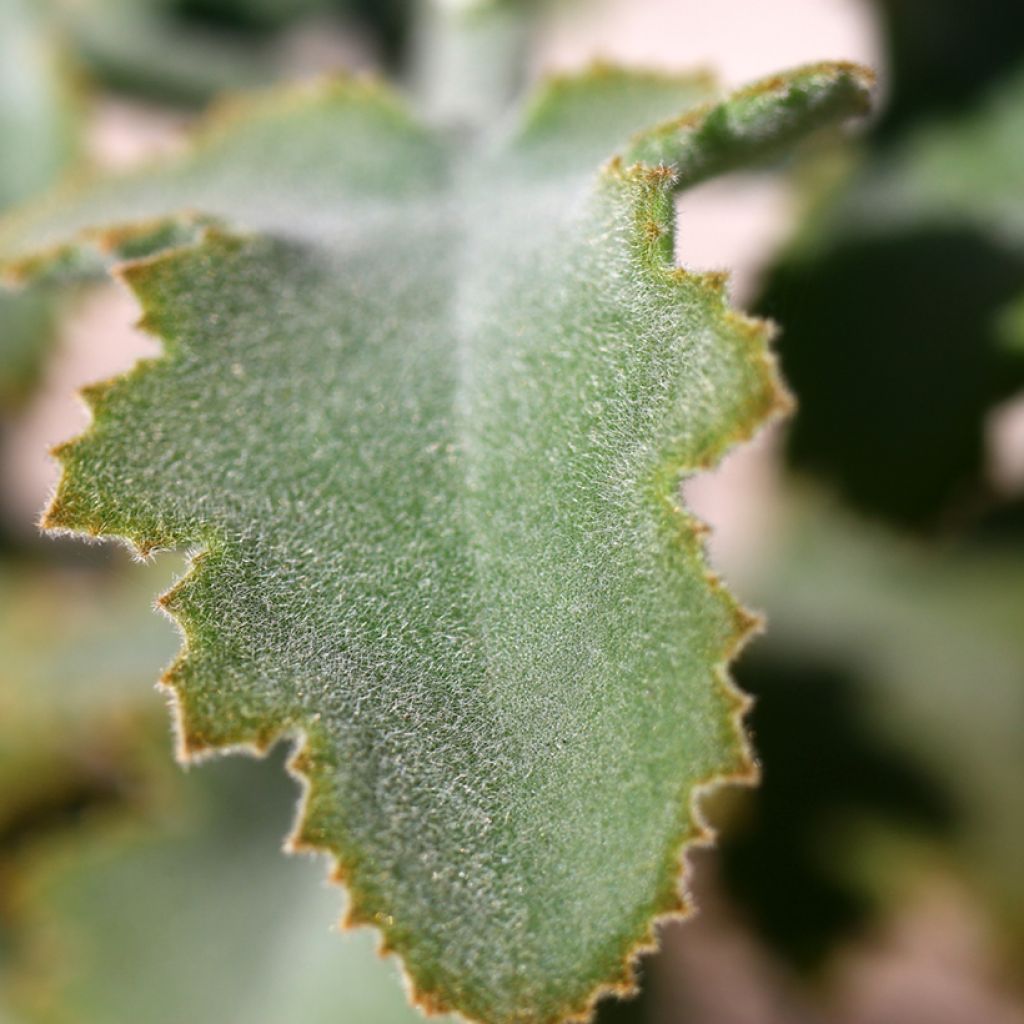

Kalanchoe Oak Leaf
Kalanchoe Oak Leaf
Kalanchoe beharensis Oak Leaf
This item cannot be shipped to the selected country
Delivery charge from 6,90 €
More information
Shipping country:
-
-
-
-
-
-
-
-
-
-
-
-
-
-
-
-
-
-
-
-
-
-
-
-
-
-
-
-
-
-
-
-
Schedule delivery date,
and select date in basket
This plant carries a 30 days recovery warranty
More information
We guarantee the quality of our plants for a full growing cycle, and will replace at our expense any plant that fails to recover under normal climatic and planting conditions.
From 7,90 € for pickup delivery and 6,90 € for home delivery
Express home delivery from 8,90 €.
Description
Kalanchoe beharensis 'Oak Leaf' is a succulent plant with a shrubby habit, native to Madagascar, prized for its foliage covered in a silvery down. Its large, thick, velvety, and beautifully lobed leaves resemble the shape of oak leaves. Its slow growth and ability to tolerate drought in both air and soil make this variety an easy, low-maintenance houseplant. Its habit and texture stand out in a collection of succulents.
Belonging to the Crassulaceae family, Kalanchoe beharensis is also known as Kalanchoe van-tieghemii. It is commonly called Elephant's Ear Kalanchoe due to the size and shape of its leaves, or Behara Kalanchoe. Native to the Behara region of Madagascar, this species grows naturally in xerophytic environments, in dry and rocky areas. In its natural habitat, it can reach up to 3 metres in height, but indoors, it rarely exceeds 1 metre. Its growth is slow but steady. Its opposite, triangular to ovate leaves measure between 10 and 20 cm long and are covered with a fine protective down, giving them a velvety, soft texture. This down reduces evaporation and helps the plant withstand drought. In the 'Oak Leaf' cultivar, the leaves are distinctly lobed, resembling oak leaves. Their colour ranges from olive green to dark green, while their surface may be smooth and powdery or covered in a thick felt of glandular hairs. With age, the foliage develops a rusty hue on top and a silvery underside. Flowering is rare indoors. It can produce small tubular yellow-orange flowers in clusters, but its main appeal lies in its foliage.
To grow Kalanchoe beharensis 'Oak Leaf' indoors, place it in a very bright spot with several hours of direct sunlight per day to maintain its compact habit and silvery hues. A well-draining substrate, such as a mix of cactus compost and sand, is essential to prevent root rot. Water moderately, allowing the substrate to dry out between waterings, especially during active growth periods. In winter, when growth slows, watering should be even more infrequent. This plant tolerates temperatures between 15 and 30°C but should be kept above 10°C, away from cold drafts. It is robust and rarely affected by diseases but may be susceptible to mealybugs.
Kalanchoe beharensis 'Oak Leaf' thrives best in a terracotta pot to facilitate moisture drainage and prevent root rot. It pairs well with other succulents of varied forms, such as Aloe vera or a trailing plant like Senecio rowleyanus, for a striking effect. Its silvery foliage contrasts beautifully with darker or green foliage.
Report an error about the product description
Kalanchoe Oak Leaf in pictures


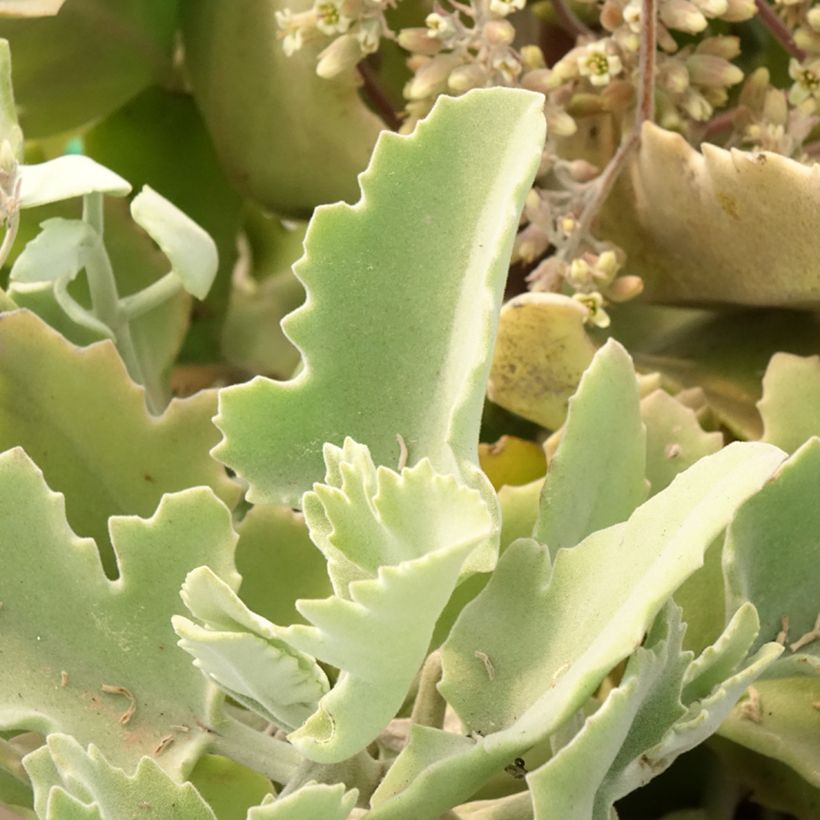

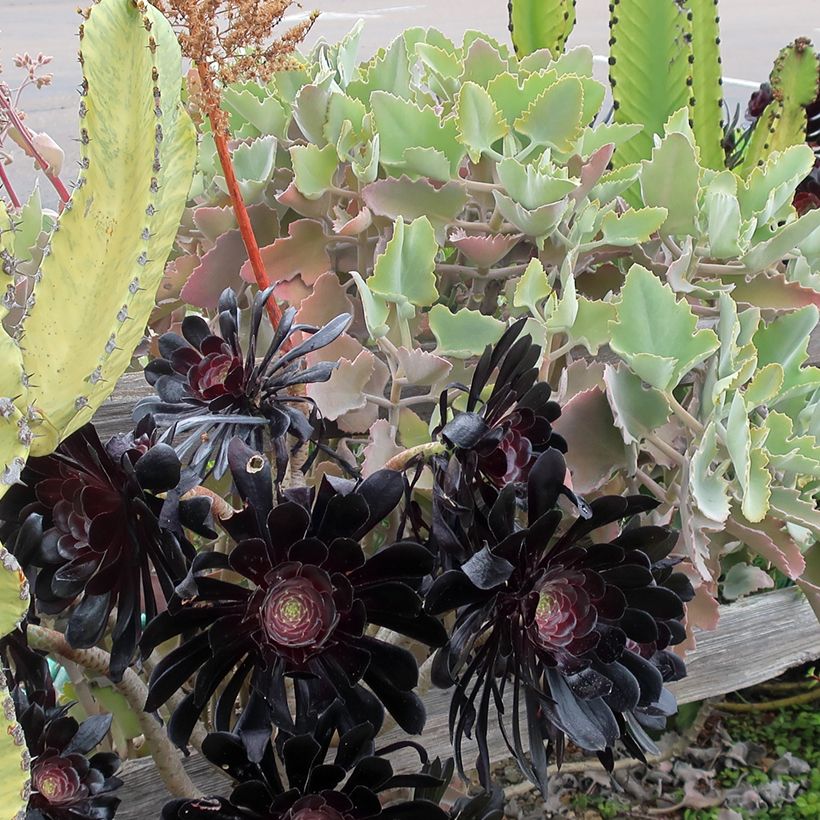

Foliage
Plant habit
Flowering
Botanical data
Kalanchoe
beharensis
Oak Leaf
Crassulaceae
Cultivar or hybrid, Madagascar
Other Kalanchoe
View all →Location
Location
Maintenance and care
Potting advice, substrates and fertilisers
Disease and pest advice
Maintenance and care
This item has not been reviewed yet - be the first to leave a review about it.
Haven't found what you were looking for?
Hardiness is the lowest winter temperature a plant can endure without suffering serious damage or even dying. However, hardiness is affected by location (a sheltered area, such as a patio), protection (winter cover) and soil type (hardiness is improved by well-drained soil).

Photo Sharing Terms & Conditions
In order to encourage gardeners to interact and share their experiences, Promesse de fleurs offers various media enabling content to be uploaded onto its Site - in particular via the ‘Photo sharing’ module.
The User agrees to refrain from:
- Posting any content that is illegal, prejudicial, insulting, racist, inciteful to hatred, revisionist, contrary to public decency, that infringes on privacy or on the privacy rights of third parties, in particular the publicity rights of persons and goods, intellectual property rights, or the right to privacy.
- Submitting content on behalf of a third party;
- Impersonate the identity of a third party and/or publish any personal information about a third party;
In general, the User undertakes to refrain from any unethical behaviour.
All Content (in particular text, comments, files, images, photos, videos, creative works, etc.), which may be subject to property or intellectual property rights, image or other private rights, shall remain the property of the User, subject to the limited rights granted by the terms of the licence granted by Promesse de fleurs as stated below. Users are at liberty to publish or not to publish such Content on the Site, notably via the ‘Photo Sharing’ facility, and accept that this Content shall be made public and freely accessible, notably on the Internet.
Users further acknowledge, undertake to have ,and guarantee that they hold all necessary rights and permissions to publish such material on the Site, in particular with regard to the legislation in force pertaining to any privacy, property, intellectual property, image, or contractual rights, or rights of any other nature. By publishing such Content on the Site, Users acknowledge accepting full liability as publishers of the Content within the meaning of the law, and grant Promesse de fleurs, free of charge, an inclusive, worldwide licence for the said Content for the entire duration of its publication, including all reproduction, representation, up/downloading, displaying, performing, transmission, and storage rights.
Users also grant permission for their name to be linked to the Content and accept that this link may not always be made available.
By engaging in posting material, Users consent to their Content becoming automatically accessible on the Internet, in particular on other sites and/or blogs and/or web pages of the Promesse de fleurs site, including in particular social pages and the Promesse de fleurs catalogue.
Users may secure the removal of entrusted content free of charge by issuing a simple request via our contact form.
The flowering period indicated on our website applies to countries and regions located in USDA zone 8 (France, the United Kingdom, Ireland, the Netherlands, etc.)
It will vary according to where you live:
- In zones 9 to 10 (Italy, Spain, Greece, etc.), flowering will occur about 2 to 4 weeks earlier.
- In zones 6 to 7 (Germany, Poland, Slovenia, and lower mountainous regions), flowering will be delayed by 2 to 3 weeks.
- In zone 5 (Central Europe, Scandinavia), blooming will be delayed by 3 to 5 weeks.
In temperate climates, pruning of spring-flowering shrubs (forsythia, spireas, etc.) should be done just after flowering.
Pruning of summer-flowering shrubs (Indian Lilac, Perovskia, etc.) can be done in winter or spring.
In cold regions as well as with frost-sensitive plants, avoid pruning too early when severe frosts may still occur.
The planting period indicated on our website applies to countries and regions located in USDA zone 8 (France, United Kingdom, Ireland, Netherlands).
It will vary according to where you live:
- In Mediterranean zones (Marseille, Madrid, Milan, etc.), autumn and winter are the best planting periods.
- In continental zones (Strasbourg, Munich, Vienna, etc.), delay planting by 2 to 3 weeks in spring and bring it forward by 2 to 4 weeks in autumn.
- In mountainous regions (the Alps, Pyrenees, Carpathians, etc.), it is best to plant in late spring (May-June) or late summer (August-September).
The harvesting period indicated on our website applies to countries and regions in USDA zone 8 (France, England, Ireland, the Netherlands).
In colder areas (Scandinavia, Poland, Austria...) fruit and vegetable harvests are likely to be delayed by 3-4 weeks.
In warmer areas (Italy, Spain, Greece, etc.), harvesting will probably take place earlier, depending on weather conditions.
The sowing periods indicated on our website apply to countries and regions within USDA Zone 8 (France, UK, Ireland, Netherlands).
In colder areas (Scandinavia, Poland, Austria...), delay any outdoor sowing by 3-4 weeks, or sow under glass.
In warmer climes (Italy, Spain, Greece, etc.), bring outdoor sowing forward by a few weeks.


































